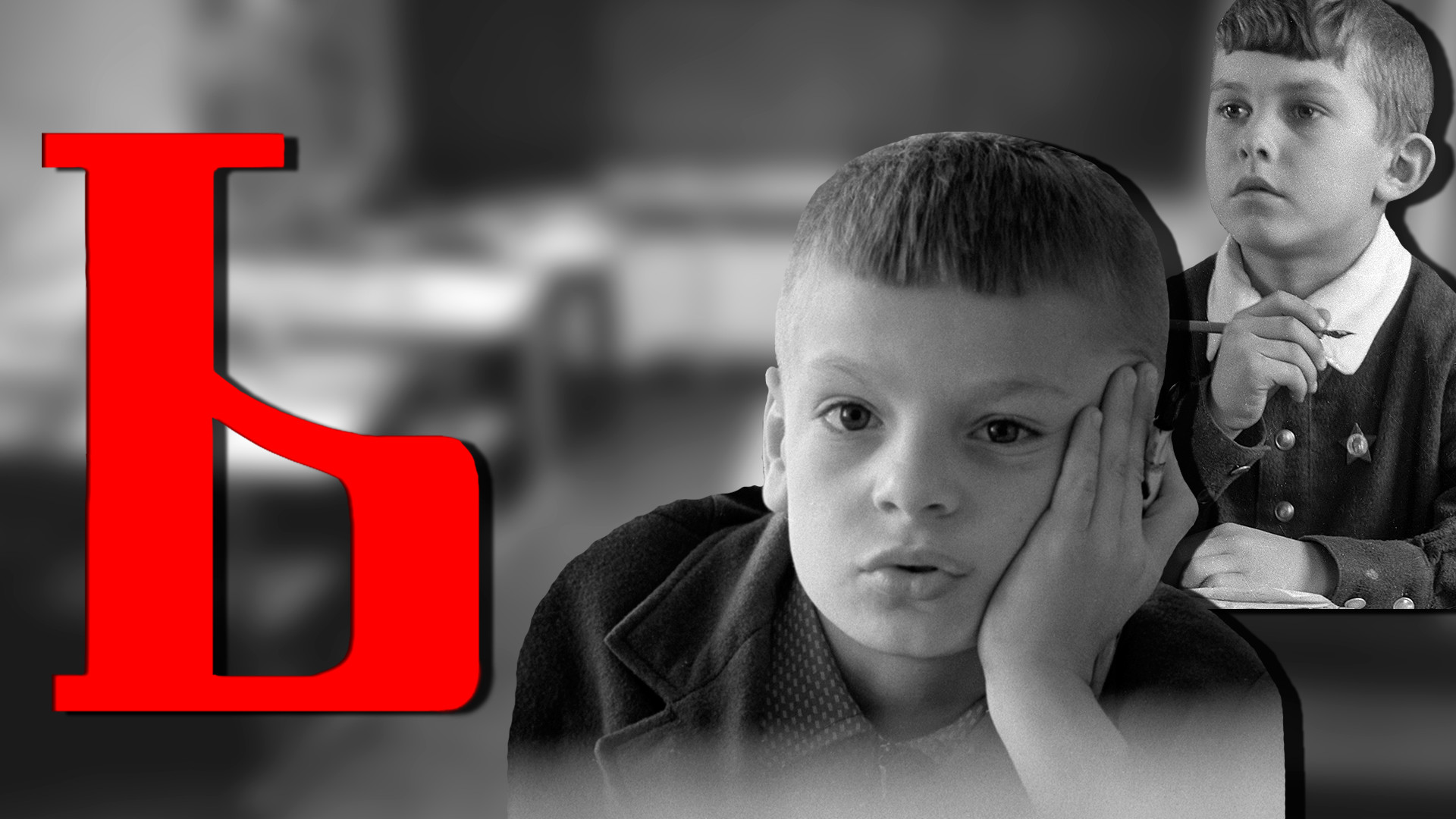
The Russian language does not have special symbols - accents or umlauts - that change the pronunciation of a particular letter, but it has some technical letters. For example, the soft sign, which (same as its twin, the hard sign) does not have a sound of its own but performs a huge number of grammatical functions that can be a real headache for those who are learning Russian.
![Родина-МАТЬ зовет [The Motherland is calling]](https://mf.b37mrtl.ru/rbthmedia/images/2020.07/original/5f15b88985600a490a1e05b4.jpg)
Родина-МАТЬ зовет [The Motherland is calling]
Sergei Subbotin/SputnikOne of the main functions of the soft sign is palatalization. The words кон (round in a game) and конь (horse), жар (heat) and жарь (to heat in the imperative), мол (allegedly) and моль (moth) are pronounced differently. The soft sign does not only show us how to pronounce a word, but it also indicates what this word is: a verb or a noun; and if it is a noun, whether it is feminine or masculine (for it is definitely not neutral); and, more importantly, what declension it belongs to. After all, this will determine how it will change in a sentence, depending on the case…
Sounds difficult, doesn't it? Once you grasp the theory, however, the soft sign will become a great help to you. The main thing is to remember the context.
![А еще говорят, что мы СВИНЬИ [And they say we are pigs!]](https://mf.b37mrtl.ru/rbthmedia/images/2020.07/original/5f15b88985600a490a1e05b5.jpg)
А еще говорят, что мы СВИНЬИ [And they say we are pigs!]
A.Mosin, 1958In Russian, very often a vowel's sound depends on the preceding letter. For example, the vowels Е, Ё, Ю, Я are pronounced as Э, О, У, А, if they are preceded by a consonant, and they soften the consonant (нервы, мёртвый, салют, мясо). However, if Е, Ё, Ю, Я are preceded by a vowel, then the soft or the hard sign, they get the sound Й added to them: ЙЭ, ЙО, ЙУ, ЙА. Семя (seed) and семья (family) are pronounced differently and, of course, mean different things.
The trickiest thing is to distinguish which sign to use, soft or hard. Why the word свинья (pig) takes the soft sign, while въезд (entry), takes the hard? There are numerous exercises for practising this rule, and yet mistakes are quite common.
The soft sign most often separates the root from the rest of the word, or the root from the suffix. Thus, the soft sign is more common near the end of a word. In contrast, the hard sign separates the prefix from the root, so it is more commonly found at the beginning of a word.
Furthermore, the soft sign is often used in borrowed words: бульон (broth), шампиньон (champignon), синьор (signor). This is how foreign letters and sounds that do not exist in Russian have been Russified. The same fate befell Большой каньон (Grand Canyon), Данте Алигьери (Dante Alighieri) and even Канье Уэст (Kanye West).
![Хорошо трудиТЬСЯ - хлеб уродиТСЯ (If you work hard, bread [wheat] will grow )](https://mf.b37mrtl.ru/rbthmedia/images/2020.07/original/5f15b88985600a490a1e05b6.jpg)
Хорошо трудиТЬСЯ - хлеб уродиТСЯ (If you work hard, bread [wheat] will grow )
M.Soloviev, 1947Perhaps the most common mistake, even among native speakers, is the correct spelling of the suffixes –ться and -тся in reflexive verbs. They sound exactly the same, but have different grammatical meanings: –ться denotes the infinitive, while -тся denotes a third-person form. "Тебе тяжело знакомиться с новыми людьми?", but "Он знакомится легко с новыми людьми."
Many people are confused as to when to add the soft sign and when not. In fact, the secret of this suffix is very simple. You just need to ask the questions что делать/сделать? (to do?) or что делает? (is doing?) For example, if тебе тяжело [что делать?] (it’s hard for you [to do what?]), then you use ТЬСЯ, and if он [что делает?] (he [is doing what?]), then you do not use the soft sign.
![Если книг ЧИТАТЬ не БУДЕШЬ - скоро грамоту ЗАБУДЕШЬ [If you don’t read books, you’ll forget how to read and write]](https://mf.b37mrtl.ru/rbthmedia/images/2020.07/original/5f15b88a85600a490a1e05b7.jpg)
Если книг ЧИТАТЬ не БУДЕШЬ - скоро грамоту ЗАБУДЕШЬ [If you don’t read books, you’ll forget how to read and write]
A.Mogilevsky, 1925The spelling of words with sibilants - Ж, Ш, Щ,Ч - is one of the most difficult areas in Russian. There is a well-known rule: "Spell ЖИ-ШИ with an И”, yet when you pronounce it what you clearly hear is an Ы. Things get even more complicated with O or Ё after sibilants since everything sounds the same; for example, in the words жёлтый (yellow) or черт (devil) what you hear is a clear O.
With the soft sign everything is even more confusing: the sibilants Ж are Ш are hard and cannot be softened even with the soft sign; while Щ and Ч are soft as is, even without the soft sign. So, in this case the soft sign has a purely technical function:
If using any of Russia Beyond's content, partly or in full, always provide an active hyperlink to the original material.
Subscribe
to our newsletter!
Get the week's best stories straight to your inbox